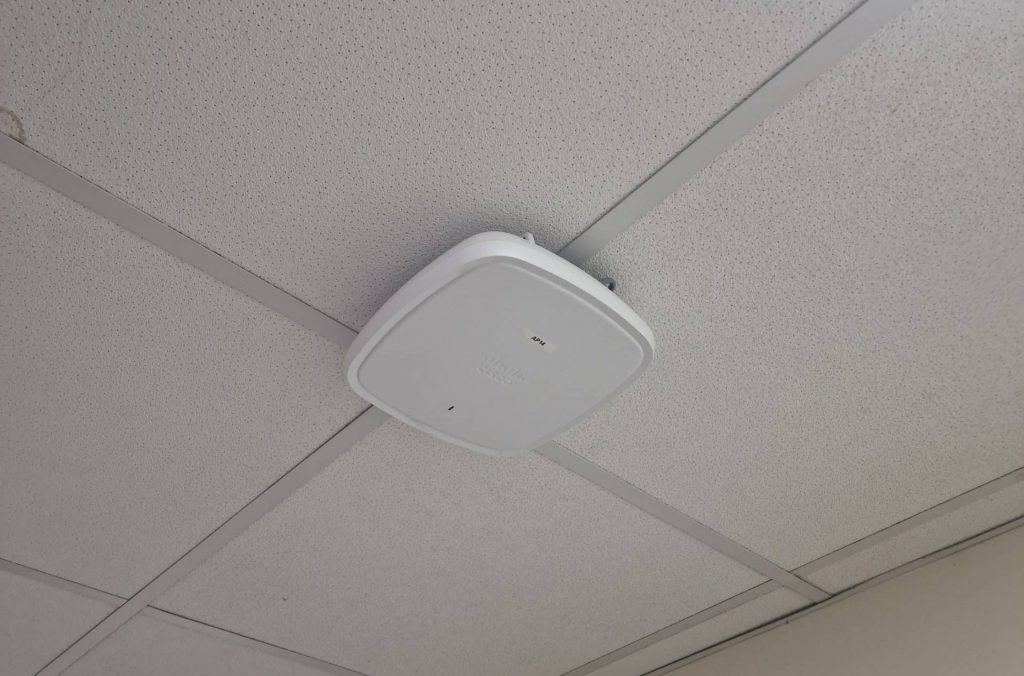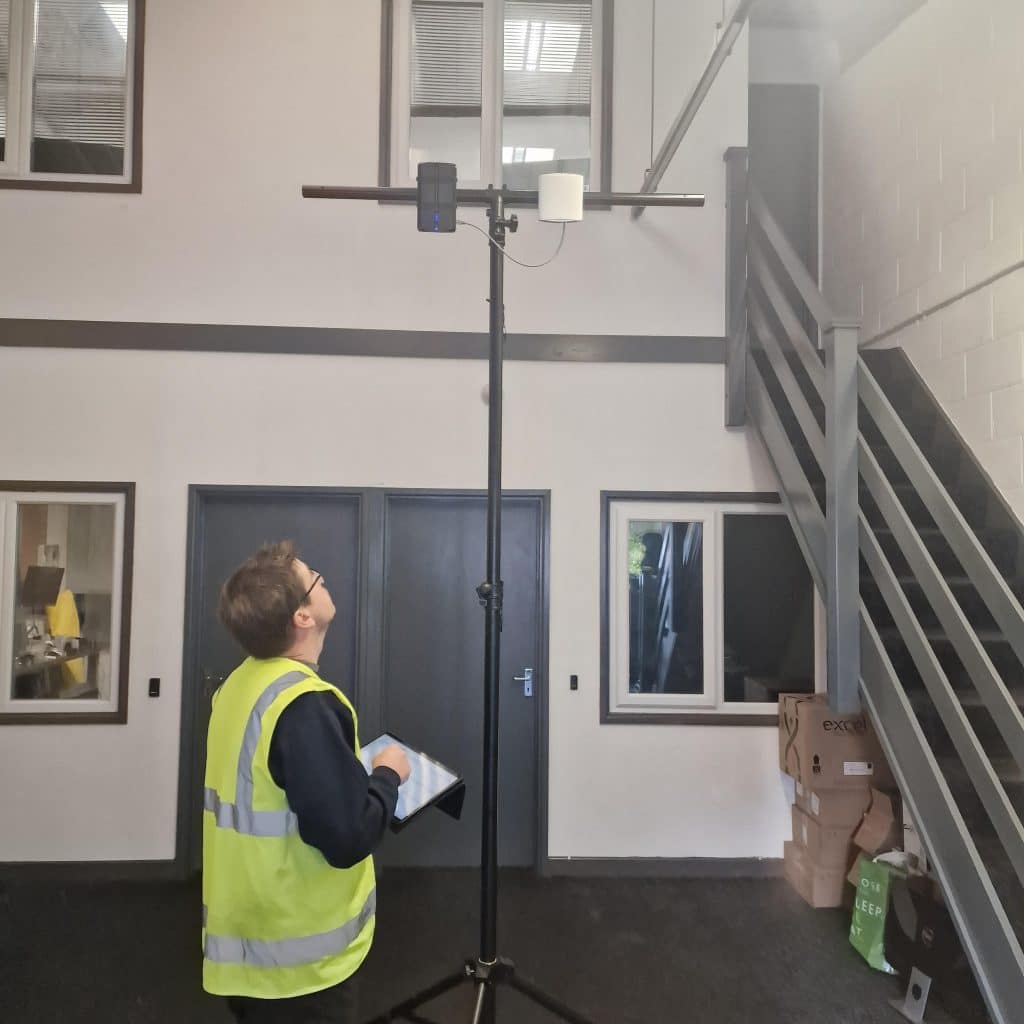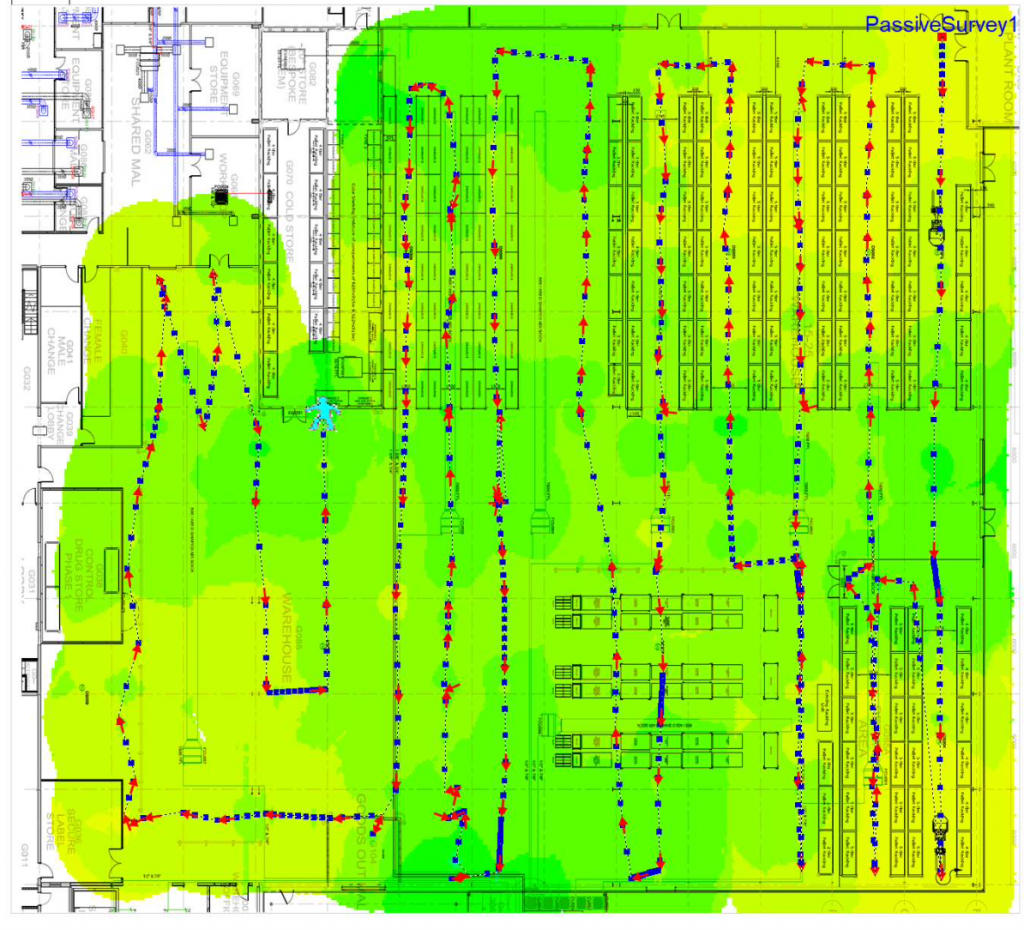Wireless Surveys for WAP’s Placement
Wireless surveys, combined with sophisticated heatmap software, play a pivotal role in guaranteeing the ideal placement of Wireless Access Points (WAP’s) within a property. This comprehensive approach ensures that your business network operates seamlessly, providing optimal coverage and signal strength.
The Importance of Wireless Surveys
Wireless surveys are comprehensive assessments conducted to analyze and optimize the wireless network within a particular area or property. These surveys involve a systematic inspection of the site to evaluate signal coverage, signal strength, potential sources of interference, and areas with poor connectivity.
By using specialized tools and software, technicians map out the wireless network, identify dead zones, and strategically plan the placement of Wireless Access Points (WAPs) to ensure optimal coverage and reliable connectivity throughout the surveyed area.
The goal of wireless surveys is to enhance the performance and efficiency of the wireless network by placing access points in the most effective locations, minimizing signal interference, and maximizing coverage for a seamless and robust wireless connection.
Wireless site surveys form the foundation for creating a high-functioning wireless network. The process involves a meticulous assessment of the property to determine the most suitable locations for WAP’s.
Wireless Survey Procedure:
1. Site Evaluation:
During a wireless survey, expert technicians conduct a detailed on-site inspection. This involves assessing the layout of the property, identifying potential sources of interference, and considering structural elements that may affect signal propagation.
2. Signal Analysis:
Utilizing advanced tools, technicians measure signal strength, pinpoint dead zones, and assess potential obstacles that might degrade wireless performance. This step is crucial in identifying areas that require improved coverage.
3. Planning and Placement:
Based on the data collected, experts strategically plan the placement of WAPs to ensure seamless coverage. Considerations are made for the number of WAPs needed, their precise placement for optimal coverage, and channel allocation to minimize interference.
4. Testing and Verification:
Post-installation, the network undergoes comprehensive testing to ensure that the actual performance aligns with the planned expectations. This stage ensures that the network operates at its optimum efficiency.
Heat Map Software: Transforming Data into Actionable Insights
Following the wireless survey, heat map software is employed to generate detailed reports on signal coverage. This software translates the collected data into visual representations, providing insights into the wireless network’s performance. Key aspects of heat map analysis include:
Visualization of Signal Strength:
Heat maps visually represent signal strength, offering a clear depiction of areas with robust coverage as well as zones with weaker signals.
Identification of Dead Zones:
Through color-coded visuals, the heat map software identifies dead zones or areas with poor signal reception, enabling technicians to take corrective measures.
Performance Analysis:
The software allows for in-depth analysis of network performance, aiding in understanding connectivity patterns and areas that require improvement.
Data-Driven Decision Making:
With the insights gained from heat map analysis, informed decisions can be made regarding the optimization of WAP placement and adjustments to enhance overall network performance.
Ensuring Efficient Business Networks
By amalgamating the insights from wireless surveys and heat map analysis, businesses can ensure their network operates at peak efficiency:
- Enhanced Connectivity: Optimal WAP placement leads to seamless and uninterrupted connectivity across the property.
- Minimized Downtime: Identifying and addressing dead zones or weak signal areas prevents connectivity issues and reduces network downtime.
- Improved Productivity: A robust network infrastructure fosters a conducive environment for increased productivity among employees.
- Future-Ready Solutions: Regular assessments and adjustments based on data insights ensure that the network remains adaptable to future business needs.
In conclusion, the integration of wireless surveys and heat map analysis is instrumental in guaranteeing the ideal placement of WAPs within a property. This meticulous approach not only optimizes network performance but also ensures a robust, future-proof business network.
For expert advice on optimizing your business network through wireless surveys and heat map analysis, contact us at Twisted Pair Technologies LTD. Our team of experts is committed to ensuring your network operates at its best.



